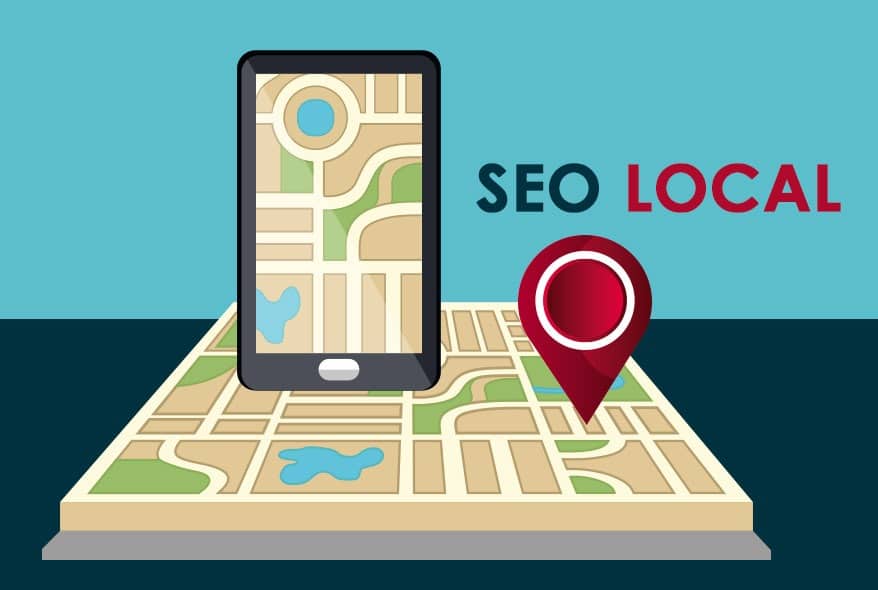In today’s digital-first world, being visible to local customers online is no longer optional—it’s essential. Whether you run a neighborhood coffee shop, a plumbing service, or a boutique law firm, your potential clients are searching for businesses like yours using location-based queries. That’s where smart local search optimization comes in.
This guide breaks down everything you need to know—from what local SEO is, to the key factors that influence rankings, and the most effective on-page, off-page, and paid strategies to help your business stand out in local search results. If your goal is to become the go-to name in your community, this is the roadmap you need.
What Is Local SEO in digital marketing?
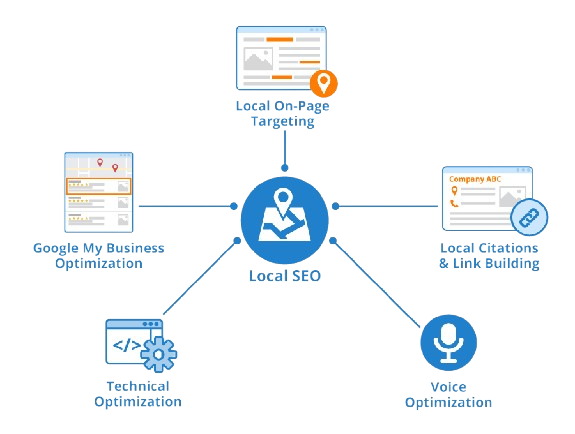
Local Search Optimization/Local SEO helps connect potential customers in your neighborhood to your business at the precise moment they’re seeking products or services you offer nearby. It focuses on improving visibility in region-specific search results—including map listings, localized organic results, and those “near me” queries people use when they want immediate or local options.
Rather than casting a wide national net, this approach hones in on geography. Whether you run a bakery, dental clinic, plumbing service, or boutique store, the goal is to appear prominently when someone in your vicinity types something like “best dog groomer in [your town]” or “24‑hour auto repair near me.”
Why Local SEO is important for small business?
People searching for “emergency locksmith near me” are ready to act. Appearing in those locally focused searches significantly raises the chance they’ll call or visit.
Mobile usage dominates
With smartphones in hand, users are frequently searching while out and about. Catering to “pizza delivery within walking distance” or “coffee shop open now downtown” gives you a real edge.
Trust factors
Google’s map pack and geographic indicators enhance trust. When a listing shows an address, verified reviews, and accurate operating hours, people feel more confident choosing that business.
Competitive advantage
Local businesses without strong search strategies get overshadowed by bigger chains or better‑optimized rivals. Effective geo‑targeted positioning can make you the top pick in your area—even if you’re a small operation.
Local SEO ranking factors in 2025
Google My Business (GMB) Profile
This is your anchor in the local ecosystem. To optimize:
- Claim your profile and verify it.
- Ensure your business name, address, and phone (NAP) are accurate and identical across platforms.
- Choose the most appropriate categories.
- Upload high-quality photos—interior, exterior, products, team.
- Post updates regularly (offers, events, seasonal promotions).
Consistency of NAP Citations
Google and directories compare your info across the web. Inconsistent listings (e.g., “Main St.” vs. “Main Street”) can harm visibility. Ensure your address and contact details are uniform across all local directories and your website’s contact page.
Online Reviews & Reputation
Encourage satisfied customers to leave reviews on Google, Yelp, and other platforms. More positive reviews—with recent timestamps—boost trust signals and local visibility. Review volume, ratings, and Google review replies all influence ranking.
On-Page Ranking Elements
Google considers your site’s content relevance to the search intent and location. Make sure to:
- Include city and region keywords in page titles, headings, and naturally in body text.
- Include structured address and phone information (Schema markup, vCard, or JSON-LD).
- Add a map embed and describe your service area in human-friendly language.
- Use ON page SEO checklist to optimise your content for search engines.
Quality Localized Content
Structured geo‑targeted blog posts like “How to choose the best painting service in [Your Town]” or “What to expect from a professional pet groomer in [Your City]” help you rank. They combine relevance with local intent.
Local Backlinks & Citations
Links from neighborhood organizations, regional chamber of commerce, local blogs, or sponsorship acknowledgments pass local authority. Each backlink that references your region—and matches your NAP—reinforces local relevance.
Mobile Friendliness & Site Speed
Local searches are highly mobile. If your site loads slowly or is hard to navigate, your bounce rate improves, and your search visibility worsens. Fast, mobile-responsive design is a must.
Social Proof & Engagement
Shares and engagement from local social media accounts (e.g., community pages or local influencer shout-outs) help amplify your presence in local search scenarios.
Best Local SEO Strategy Guide for Small business in 2025
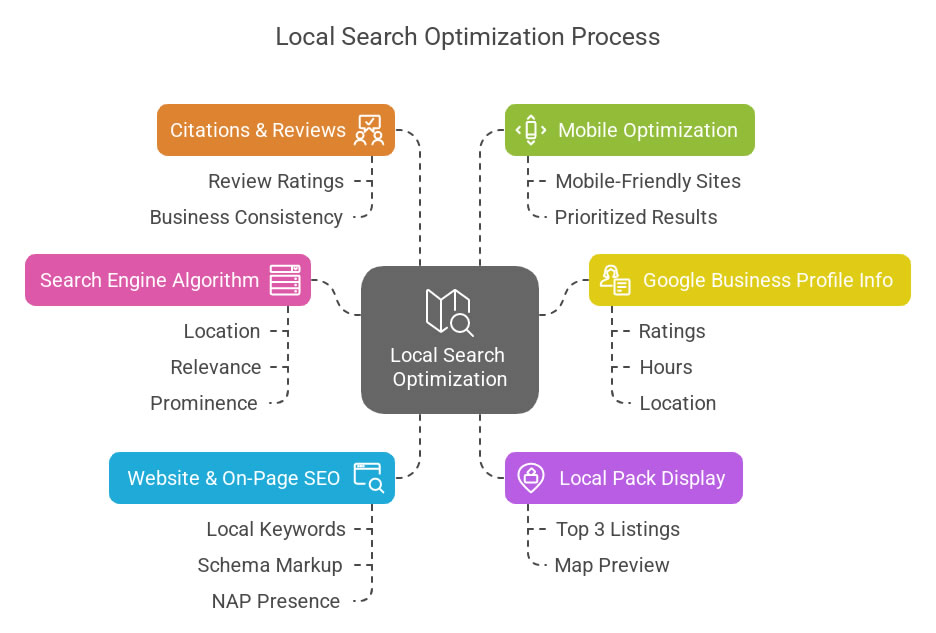
Step‑by‑Step Guide
Google My Business Setup
- Create a Google business profile account.
- Claim and verify via postcard or phone.
- Accurate information: Name, address, phone, website.
- Category choices: Both broad and niche.
- Photos: Showcase exterior, interior, team, products.
- Regular posts: Promotions, seasonal offers, tips.
- Questions & Answers: Provide helpful responses regularly.
Page-Level Optimization
- Homepage & Location Pages
- Add your city/region in titles, meta descriptions (e.g., “Best garden center in Springfield, IL”), H1s, and content.
- Embed a Google Map.
- Include structured address markup in JSON-LD.
- Service Pages
For each offering, create a separate page like “Emergency AC repair in Uptown.” Emphasize clarity in headers, bullets, and images. - Local Schema Markup
Use JSON-LD to encode address, opening hours, service area, and geo-coordinates. This helps search engines confirm locality data. - Contact Page
Use consistent NAP. Include a map, operating hours, parking or transit notes, and ways to reach you.
Content with Local Focus
- Use blog posts or articles about local events, service tips tailored to local conditions, or how to find community resources.
- Highlight local staff, partnerships, case studies, or customer stories that include neighborhoods or landmarks.
1) ON Page Ranking factors for Local SEO
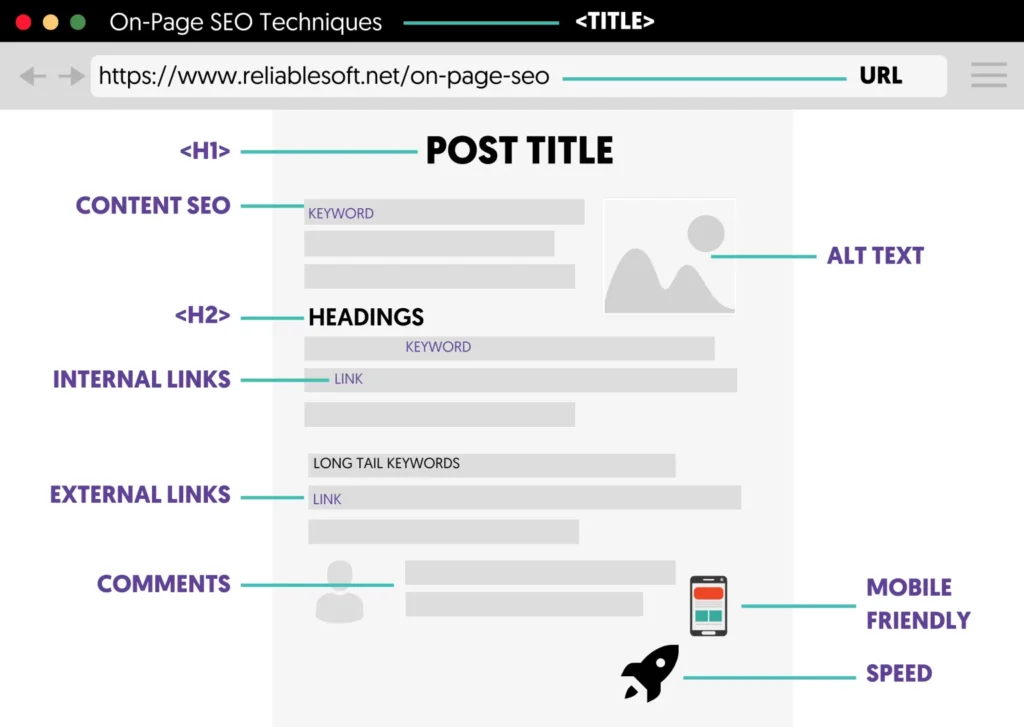
Localized Keyword Optimization
Don’t just say “florist” or “auto repair”—use “affordable bridal bouquet florist near downtown” or “car repair shop open late [your city]”. These long-tail intent phrases map directly to what customers search.
Title Tags and Meta Descriptions: Include neighborhood names and track clicks with compelling phrasing like “Same‑day service” or “Trusted by locals since 1999.”
Headings & Subheads: Use geographic cues in H2s/H3s—e.g. “Why Uptown residents choose our solar installation service.”
Google Site Kit Plugin: Integrating your website with Site Kit to track analytics, webmasters and earnings.
Images with Local Context: Label image alt text with locality references: e.g., “Downtown café interior”, “Sunset Beach yoga session.”
Internal Linking Structure: Use anchor texts like “[neighborhood] plumbing services” that guide users (and search engines) to the relevant locally focused pages.
Site Speed & Mobile: Optimize images, reduce code bloat, and use caching. A fast mobile-first site boosts both user experience and ranking.
2) OFF page ranking factors for local business
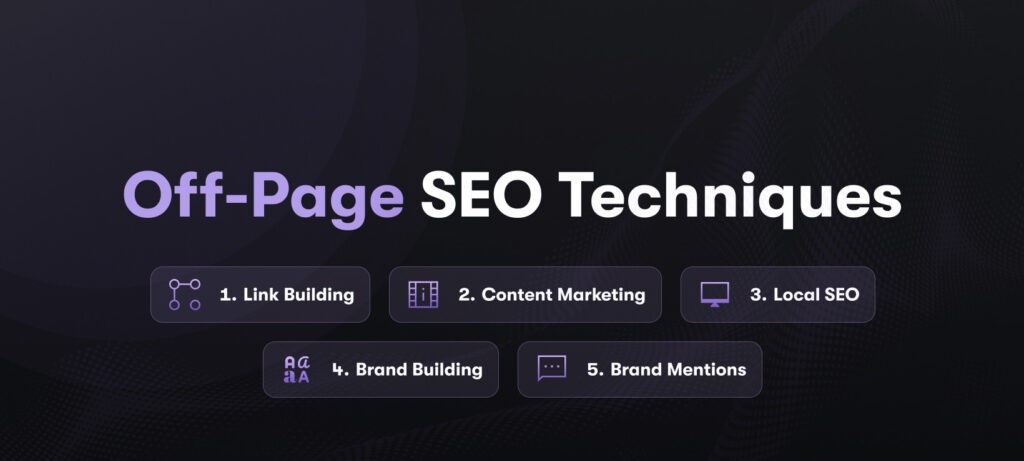
Build Local Citations
Submit listings to local directories, such as chambers of commerce, Better Business Bureau, Yelp, regional blogs, and other niche directories in your field.
Gain Relevant Local Backlinks
Contribute to community websites, sponsor events, and partner with local bloggers or newspapers. Ask for mentions with correct address and link back to your site.
Engage in PR & News
Local news sites linking to your site can signal local relevance. Create newsworthy events (charity drives, opening events, ribbon cutting) and send press releases to local media.
NGO and Community Involvement
Activities like volunteer work or donating time/products can get mentions and backlinks from local nonprofits’ websites.
Local Forums & Social Groups
Participate authentically in Facebook Groups or Reddit (e.g., r/YourTown) and link to resources on your site when relevant.
Review Management
Turn happy customers into advocates. Share links prompting customers to review you on Google, Yelp, or sector-specific platforms. Respond professionally to all reviews.
3) How to use Google Ads in Local SEO marketing?
While organic tactics are fundamental, paid ads can complement and boost your visibility—especially if you’re aiming to dominate local search real estate.
Google Search Ads with Geo‑Targeting
Set up campaigns targeting relevant keywords after doing keyword research for your business. Also phrases like “in”, “near”, or “close by” your city can help you find less targeted keywords. Limb budgets by zip code or radius (e.g., within 5 miles). This ensures your text ads show to people in your service area.
Call-Only Campaigns
For businesses where calls drive conversions—think plumbers, locksmiths, HVAC—run call-only ads. These are formatted to show your phone number prominently on mobile screens.
Location Extensions
Include Google Ads location extensions so users see your address, distance to location, map link, and store hours. This enhances credibility and local results visibility.
Local Search Ads in Maps
Opt into local search ads—paid listings that appear in Google Maps results. These stand at the top of map searches for users in your area.
“Near Me” Keyword Campaigns
Bid on long-tail queries like “ac service near me 24/7” or “child haircut salon open Sunday near [city name]”. These capture high intent from mobile users ready to take action.
Ad Scheduling on Peak Hours
Identify when your local customers search and align ad schedules with those times. For example, if your pizzeria gets peak late‑evening orders, ramp up ads in that window.
Performance Tracking
Monitor metrics such as impressions, search terms, clicks, call conversions, and location visits. Use local pack interaction data to tweak campaigns over time.
Integrating Paid and Organic results for Maximum Local Impact
- While ads run, simultaneously build your organic assets—write local service pages and grow review volume.
- Use ad insights—search term data and click-through metrics—to refine your site’s on‑page language.
- Cross‑link: Feature your GMB photos and reviews in ad landing pages to reinforce trust.
- Consider a parallel presence on local marketplaces (JustDial, Sulekha, etc.) but optimize so your site ranks above them.
4) Monitoring, Reporting & Ongoing Optimization
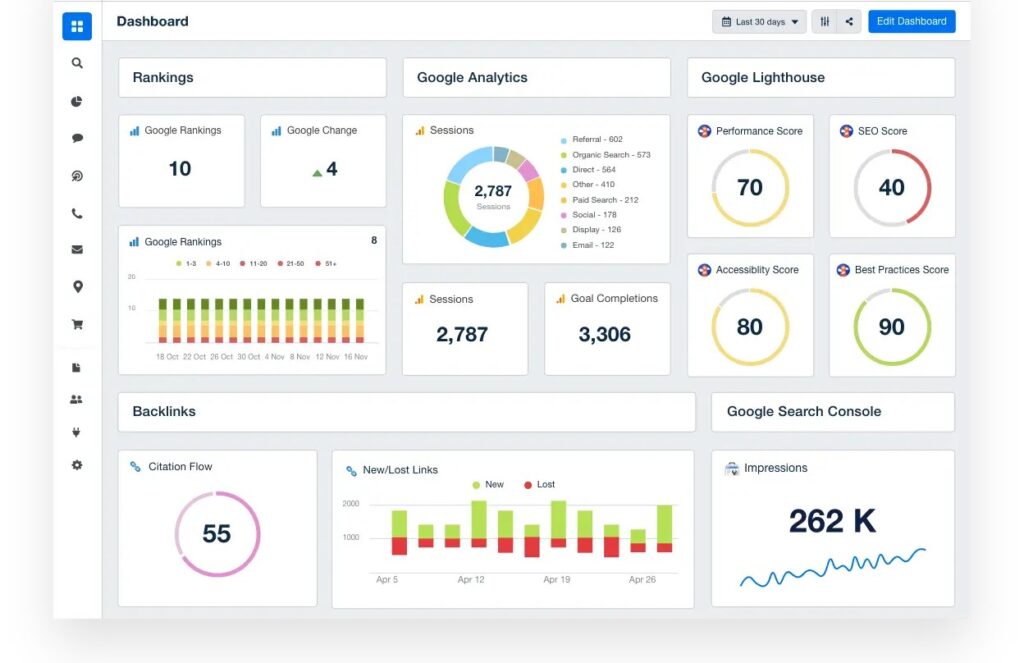
Track Google My Business Insights
Watch metrics like number of views, direction requests, phone calls, and website visits. These indicate how well your local presence is performing.
Use Rank Tracking Tools
Monitor how your pages rank in local searches (e.g., “women’s hair salon [your town]”). Track shifts over time tied to changes.
Encourage Regular Reviews
Collect new reviews monthly. During seasonal rushes, offer prompt reminders. Respond within 48 hours—thank positives, resolve negatives. This steady activity keeps your profile fresh.
Audit NAP Citations Quarterly
Run checks using tools like Moz Local or BrightLocal to spot inconsistencies. Correct any misspellings or outdated info.
Update & Expand Content
Seasonal blogs (“summer haircut trends in [your region]”) or new service pages keep your site relevant and keep search engine crawlers engaged.
FAQ for Local Business SEO
Q: Is local SEO only for brick-and-mortar businesses?
A: Mostly—because it centers on physical proximity—but service-area businesses (plumbers, delivery) can also benefit by optimizing their service regions.
Q: Can I skip off-page and just focus on GMB?
A: No. While GMB is essential, backlinks and local reviews build authority. Without them, your listing may not outrank competitors with minimal SEO work but diverse citations.
Q: How long till I see results?
A: The timeline varies. With good execution, GMB visibility improves in 2–4 weeks. On‑page ranking might take 1–3 months. Off‑page authority takes longer—6–12 months for strong organic positioning.
Q: Will running ads hurt my free listing?
A: No. Ads and organic listings appear separately. In fact, a combined approach boosts overall visibility and provides multiple ways for customers to reach you.
Local SEO Checklist for 2025
| Area | Key Actions |
|---|---|
| GMB | Claim, verify, photos, posts, category, Q&A |
| On‑page SEO | Geo‑titles, local schema, map embed, mobile speed |
| Content | Write neighborhood‑focused blog posts and services |
| Reviews | Ask happy customers, respond promptly, keep fresh |
| Local Citations | Submit NAP to directories, fix errors, be consistent |
| Backlinks | Partner locally, sponsor events, PR with local media |
| Paid Ads | Run geo-targeted search and call-only campaigns |
| Monitor | Track GMB insights, ad performance, and rankings |
| Revise & Expand | Add pages, rotate campaigns, collect ongoing feedback |
What is the Future of Local SEO?
For small- to mid-sized businesses that rely on walk‑in or local customers, this targeted strategy can dramatically boost foot traffic, calls, and bottom-line revenue. Even little factors like having the best sitemap and robots.txt with content tags can improve Local SEO rankings. By combining ongoing monitoring, consistent local content, authentic external endorsements, and strategic ad placement, you create a virtuous cycle of stronger visibility and increased customer trust.
Your next step? Start with the GMB profile—ensure it’s fully complete and verified. From there, layer in geo‑focused web pages and content. Then move into citations and reputation. As you build organic presence, support it with well‑targeted ad campaigns to maintain top‑spot dominance.
This integrated, step‑by‑step approach ensures that when your neighbors search for your service, you are the top name they see—trusted, relevant, and right where they need you. Read more SEO/SMM guides by bookmarking DROIDUNCLE and follow us on social media.
